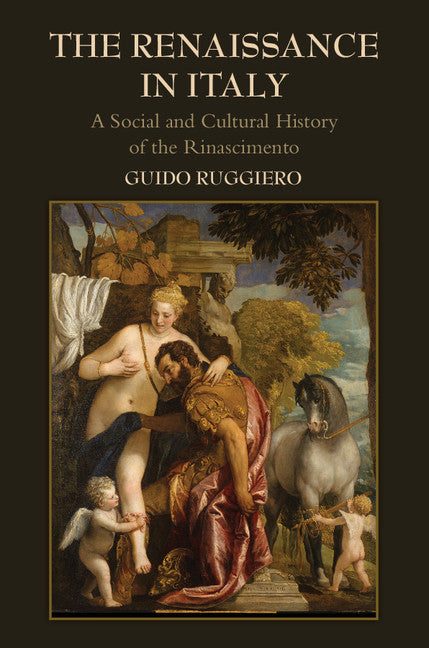Freshly Printed - allow 8 days lead
Couldn't load pickup availability
The Renaissance in Italy
A Social and Cultural History of the Rinascimento
This book offers a rich and exciting new way of thinking about the Italian Renaissance.
Guido Ruggiero (Author)
9780521719384, Cambridge University Press
Paperback, published 22 December 2014
648 pages, 33 b/w illus. 3 maps
23 x 15.3 x 3.7 cm, 1.06 kg
'Providing a comprehensive and concise history of approximately three centuries is no small task. Guido Ruggiero's The Renaissance in Italy rises to the challenge, presenting readers with an intellectually ambitious, erudite and engaging narrative of Italy's social and cultural contours between 1250 and 1575. In the process, Ruggiero touches on the ways that we as scholars and students have excavated, told and re-told our stories of a period both contested and persistently figured as pivotal to the development of European modernity.' Sean Roberts, European History Quarterly
This book offers a rich and exciting new way of thinking about the Italian Renaissance as both a historical period and a historical movement. Guido Ruggiero's work is based on archival research and new insights of social and cultural history and literary criticism, with a special emphasis on everyday culture, gender, violence and sexuality. The book offers a vibrant and relevant critical study of a period too long burdened by anachronistic and outdated ways of thinking about the past. Familiar, yet alien; pre-modern, but suggestively post-modern; attractive and troubling, this book returns the Italian Renaissance to center stage in our past and in our historical analysis.
1. Legitimacy: a crisis and a promise (c.1250–c.1340)
2. Civiltà: living and thinking the city (c.1300–c.1375)
3. Plague: death, disaster, and the rinascita of civiltà (c.1325–c.1425)
4. Violence: social conflict and the Italian Hundred Years War (c.1350–c.1454)
5. Imagination: the shared primary culture of the early Rinascimento (c.1350–c.1475)
6. Courts: princes, aristocrats, and quiet glory (c.1425–c.1500)
7. Self: the individual as a work of art (c.1425–c.1525)
8. Discovery: finding the old in the new (c.1450–c.1560)
9. Re-dreams: virtù, saving the Rinascimento, and the satyr in the garden (c.1500–c.1560)
10. Reform: spiritual enthusiasms, discipline, and a church militant (c.1500–c.1575)
11. Retreat: the great social divide and the end of the Rinascimento (c.1525–c.1575).
Subject Areas: History of ideas [JFCX], Early modern history: c 1450/1500 to c 1700 [HBLH], European history [HBJD]


